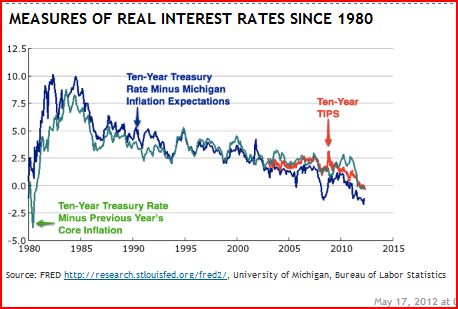The NKs win when only the RBC model is left standing
Karl Smith starts off a new post as follows:
I define the simplified version of the Sumner Critique as follows: If the Central Bank is targeting Nominal GDP precisely then all other macroeconomic effects become classical in nature.
That’s a good observation, although I’d put it differently:
I define the simplified version of the Sumner Critique as follows: If the Central Bank is targeting expected Nominal GDP then all other macroeconomic effects become approximately classical in nature.
It looks similar to Karl’s formulation, but there are three key differences. First, I prefaced NGDP targeting with “expected.” This is important for several reasons, but in this context it allows us to remove the term ‘precisely.’ (A term that otherwise allows skeptics to easily dismiss the critique.) Obviously one cannot precisely target NGDP, but one can precisely peg the price of NGDP futures markets. If one does that, then the expected fiscal multiplier becomes precisely zero (in nominal terms, supply-side effects are possible.) But actual NGDP can move around a little bit, and hence the world is only approximately classical in nature.
Even so, I’m so convinced that stabilizing expected NGDP (via level targeting) would also roughly stabilize actual NGDP that I have in the past made grand claims about “the end of macro.” (Of course I actually meant the end of certain types of macro, just as Francis Fukuyama actually meant the end of certain types of history.)
Macroeconomics is the study of policy failure. Once an issue goes away the field loses interest. Liquidity traps were dropped from the curriculum in the 1970s, when 13% inflation and 15% interest rates made the “problem” of being stuck in deflation and zero rates seem absurd.
The reason New Keynesians and real business cycle-types got along so well during the 1990s and early 2000s is that the nominal problem seemed solved. NGDP growth was stable enough that NKs thought that the Fed could do the job, and that fiscal stabilization wasn’t needed. And the RBC-types were basically fine with a 2% inflation target, and in any case they were more interested in other issues. With the fight over NGDP off the table, macroeconomists could focus on other topics, mostly classical in nature.
Of course all that came to an end in late 2008. The NKs began to see low NGDP as a huge problem. They also saw that inflation targeting wasn’t enough. The RBC-types continued to believe inflation targeting was all you needed on the demand-side.
In 1984-2007 we came close to solving the key macro problem, NGDP stabilization. We were thrown off course by a number of factors, including an inability to use the interest rate instrument at the zero rate bound. If we can get a better policy instrument (NGDP futures targeting anybody?) then we will go right back to the macro problem being solved. When that happens, it will no longer be necessary to divide textbooks into micro and macro splits. The remaining macro areas (such as long run growth) will be special topics, analogous to international trade.
The irony here is that the NKs (and of course us market monetarists) can only succeed by making our models obsolete—thrown into the dustbin of history—and by allowing the RBC-types to take over what little is left of macro.
PS. Wikipedia year 3012: “Scott Sumner was an economist who for some odd reason was obsessed with the money supply and NGDP. Of course as we all know NGDP fluctuates very little, and those small fluctuations are completely uncorrelated with changes in the money supply. He had his 15 minutes of fame, and then rapidly fell back into obscurity.”


